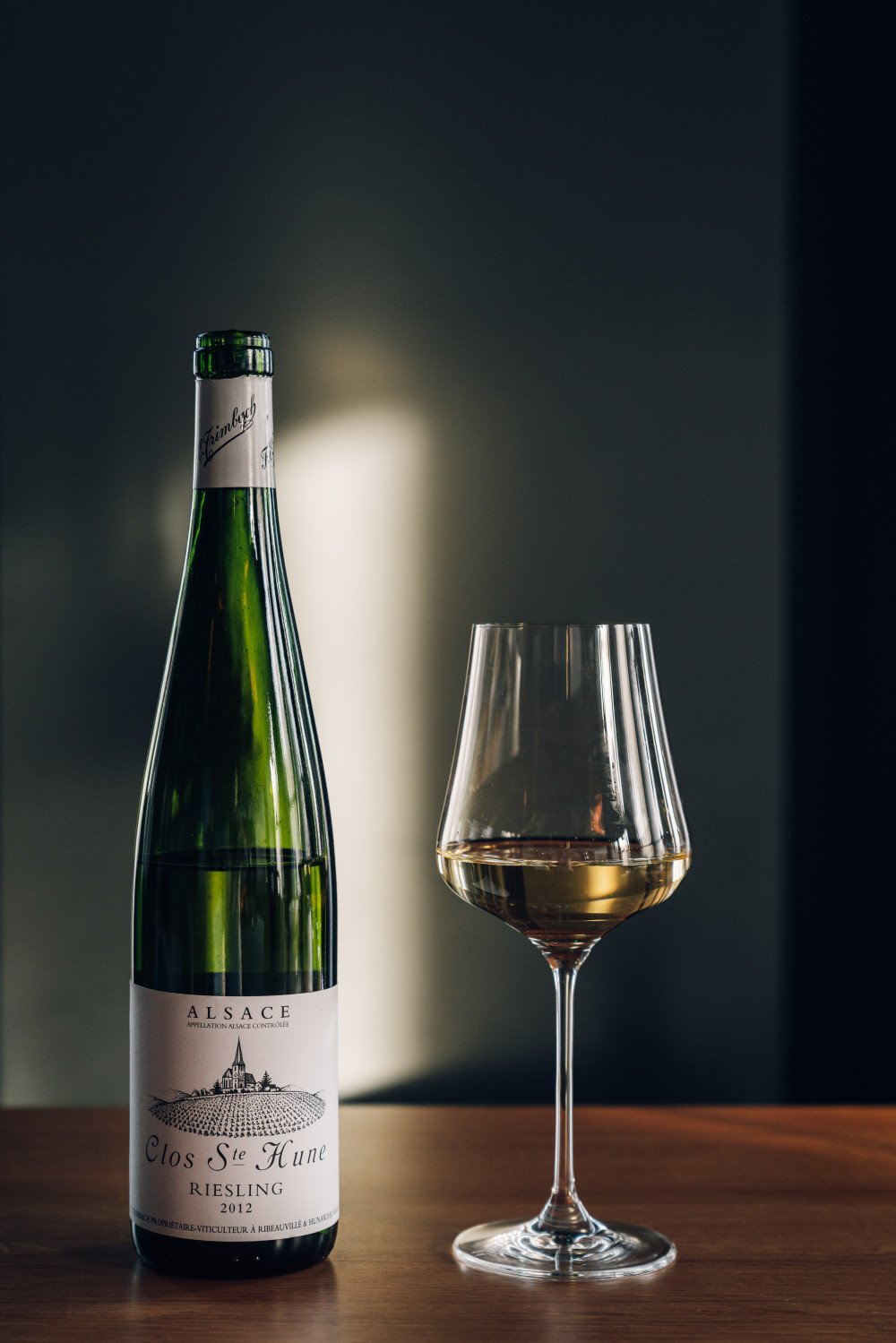Alsace Wine
Alsace is the easternmost wine region in France. The climate is ideal for wine growing. Lots of sun (comparable to Roussillon) and one of the least rain amounts in France. This is partly due to the Vosges with mountain peaks up to 1400 meters. Alsace is best known for its white wines made from Riesling, Gewurztraminer and Pinot Gris. Both dry and sweet wines (Vendanges Tardive and Grains Nobles) are among the finest wines in France.
The Best of Alsace Wines
Alsace is the easternmost wine region in France and is clearly non-French. The towns and villages are built in half-timbered style and the wines are often called after their grape variety. Where do we encounter that more? Indeed: Germany. The Rhine River acts as the boundary between France and Germany. On the opposite side lies Baden, a German wine region producing wines akin to Alsace's style.
The area has a turbulent history and was often a battle between Germany and France and therefore often changed as part of one of the countries. You will find evidence of this everywhere, not least through the use of German and French names interchangeably (rue de Pfaffenheim, for example).
The climate is ideal for wine growing. Lots of sun (comparable to Roussillon) and one of the least rain amounts in France. This is partly due to the Vosges with mountain peaks up to 1400 meters.
Alsace is best known for its white wines made from Riesling, Gewurztraminer and Pinot Gris. Both dry and sweet wines (Vendanges Tardive and Grains Nobles) are among the largest wines in France.
The best and most famous wine producers in Alsace include Zind Humbrecht, Trimbach and Marcel Deiss.
Grapes in wines from Alsace
Over the centuries, winemakers in the Alsace have consistently found that four specific grape varieties produce exceptional wines. These grapes are classified as the "noble" grapes and entail: Riesling, Gewurztraminer, Pinot Gris and Muscat. However, only the Grand Cru Vineyards are allowed to cultivate Noble Varieties on their soil.
Both dry and sweet wines (Vendanges Tardive and Grains Nobles) are among the some of the best wines in France. The most widely grown grape in the Alsace wine area is Riesling, which is widely regarded as being the grape to make the best Alsace wines
The history of wine in Alsace
The Alsace wine region has a long history that intertwines Germanic and Roman influences. Its wines were greatly valued during the Medieval era.
Following World War I Alsace underwent shifts, from German to French governance. The importance of wine in the region grew to symbolize the identity of Alsace, impacting regulations notably seen in label related disputes, between France and Germany. Throughout World War II Alsace experienced German occupation. Returned under French authority after the war.
The terroir of Alsace wines
About 150 million years ago, the Rhine Valley slowly sank into the sea, depositing various rocks such as sandstone, limestone, and marl on top of the granite. About 50 million years ago, in the Tertiary, the Rhineland Mountains slowly collapsed and formed the present Rhine plain. This played an important role in rearranging geological layers, supplemented by deposits from the sea and rivers.
This led to three distinct units in Alsace: the Vosges Mountains with granite, sandstone and sometimes shale; the hills below the Vosges Mountains with different soils; and the Rhine plain with mainly marl and alluvial deposits. Most vineyards are located on the foothills of the mountains, the bottom of which is composed of granite and sand-lime brick.
The climate is ideal for wine growing, enjoying a semi-continental climate due to the protective Vosges mountains. Shielded from oceanic influences, it experiences low rainfall and abundant sunshine, fostering warm, dry conditions ideal for vine growth. This climate pattern of hot summers and cold winters enhances grape development, creating balanced acidity and complex aromas. While western winds bring rainfall to the slopes, it significantly lessens by the time it reaches the vineyards, reducing the risk of rot and minimizing necessary vineyard treatments.
Wine producers
Classifications of wines from Alsace
The primary Appellations in Alsace are:
- Alsace AOC: Primarily for white still wines.
- Crémant d’Alsace AOC: Designated for sparkling and rose wines.
- Alsace Grand Cru AOC: Reserved for limited, exceptional wines sourced from specific and prestigious vineyards, denoting superior quality. And made from Riesling, Gewurztraminer, Pinot Gris or Muscat.
Other regions



